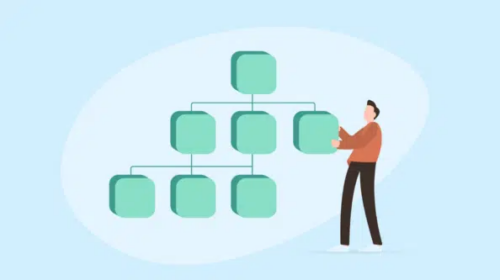Link intent: How to combine great content with strategic outreach
Building content that naturally earns links is more effective, evergreen and efficient than old link building tactics. Here’s why.
Your content will now be battling with even more competition: AI results in the SERP and AI-produced content from other publishers.
Delivering signals of authority and value will be more vital than ever. As long as organizations and individuals are still publishing content, backlinks will be an important part of that authority.
If you’ve been in the SEO field as long as I have, I’m sure you also get 10 or more LinkedIn messages daily from “link building agencies” promising you a set number of links.
It’s not just super-annoying. It’s the wrong way to approach getting links to your content.
Link building is important. Establishing external authority matters.
So let’s talk about a way to do it better (and turn off fewer people in the process): building content that naturally generates links, or what I call writing content with link intent.
In this article, I’ll break down how to approach link intent, including:
- The philosophy behind content that generates links.
- The business significance of effective link intent.
- Practical steps to plan content with link intent.
The philosophy driving content with link intent
Link building and content creation should be part of the same process (although I’ve found that to be rare). Link building as a separate initiative makes it likely that you’re making the mistake of optimizing for links alone without regard for down-funnel effects.
Instead, start by thinking about who in your community cares – or should care – about what you’re writing and why.
Content generated from this mindset, not a quantity-based “must get links” attitude, has a far better chance of passively gaining links over time.
If you do the work of writing strong, relevant content that makes people want to share it, and you’ve provided value, the links will come (without the need to send spammy emails or InMails).
If you’re working in content and link building silos, your resources are likely working toward a goal number of links and asking for link swaps.
In my experience, this strategy tends to ignore whether the content being pushed is relevant or useful and would actually reflect well on your brand, which is the opposite of what good content should achieve.
Content that’s written with a nod toward Google’s helpful content guidelines – providing value and geared toward the user experience – will actually appeal to the people who write about the same concepts and are looking for fellow experts to validate their positions.
If you can produce content good enough to contribute to the topic’s discourse, it will attract links, and Google will come to recognize its relevance. It’s a much deeper and more integrated approach than sheer link building numbers.
The business significance of effective link intent
I can confidently tell you that I’ve won several clients for my agency thanks to the content I’ve written (thanks, Search Engine Land!). Chances are that many B2B businesses can make similar claims.
Content good enough to generate passive links gives you a great chance of getting shared and driving referral traffic, which is generally undervalued in SEO.
Valuable content produced with link intent will naturally drive links and equity over time, producing a built-in snowball effect.
That does more than save you time with link outreach. It ideally creates a network of related sites and publishers for referral traffic that can provide tons of value over time.
Think of it as an organic version of affiliate marketing, which is a huge channel (and gathering steam).
Practical steps to building content with link intent
Ready for a checklist to get you on your way?
You’ll notice an outreach component, but it comes near the end after the heavy lifting of relevance is done.
- Research keywords where bloggers and journalists are searching for references (these keywords often include “statistics” or “reports”). Use Reddit, Quora, Twitter, Ahrefs (Matching terms report) and Exploding Topics among your references.
- From those keywords, build a list of topics around which your team can share valuable insights and perspectives.
- Research a list of writers and journalists who cover those topics.
- Find expert resources (either internal or closely connected), and interview them for resources to build a cache of content.
- Refine and develop that content into contemporary insights using Google Trends and social listening, using timing and a list of audience modifiers to heighten relevance.
- Example: Get a list of tips from an expert targeted to help hay fever sufferers (niche audience/modifier) get a better night’s sleep (core topic/target) during a particularly bad high pollen count period (relevance).
- Pitch a group of writers and journalists who cover your theme and/or sub-theme on why this matters right now and how it’s different from other content they might find to reference.
- If (or even before) those writers and journalists link to your content, follow them on their social channels to deepen your connection for future opportunities.
Does this work? Consider Todoist, whose unique presentation of productivity methods has generated hundreds of referring domains – a number that’s grown 50% year over year and contributed mightily to the brand’s growth.
Honing in on intent-driven link building
I talk to many SEOs these days who put less emphasis on link building than they did years ago.
In my opinion, this is less about links losing importance than it is about old link building tactics becoming irrelevant.
A link-intent approach combining great content with strategic outreach is more effective, evergreen, and efficient than siloed content and link initiatives.
It burnishes your brand’s reputation at the same time, which, along with driving incremental traffic, influences your users’ experience for the better.





